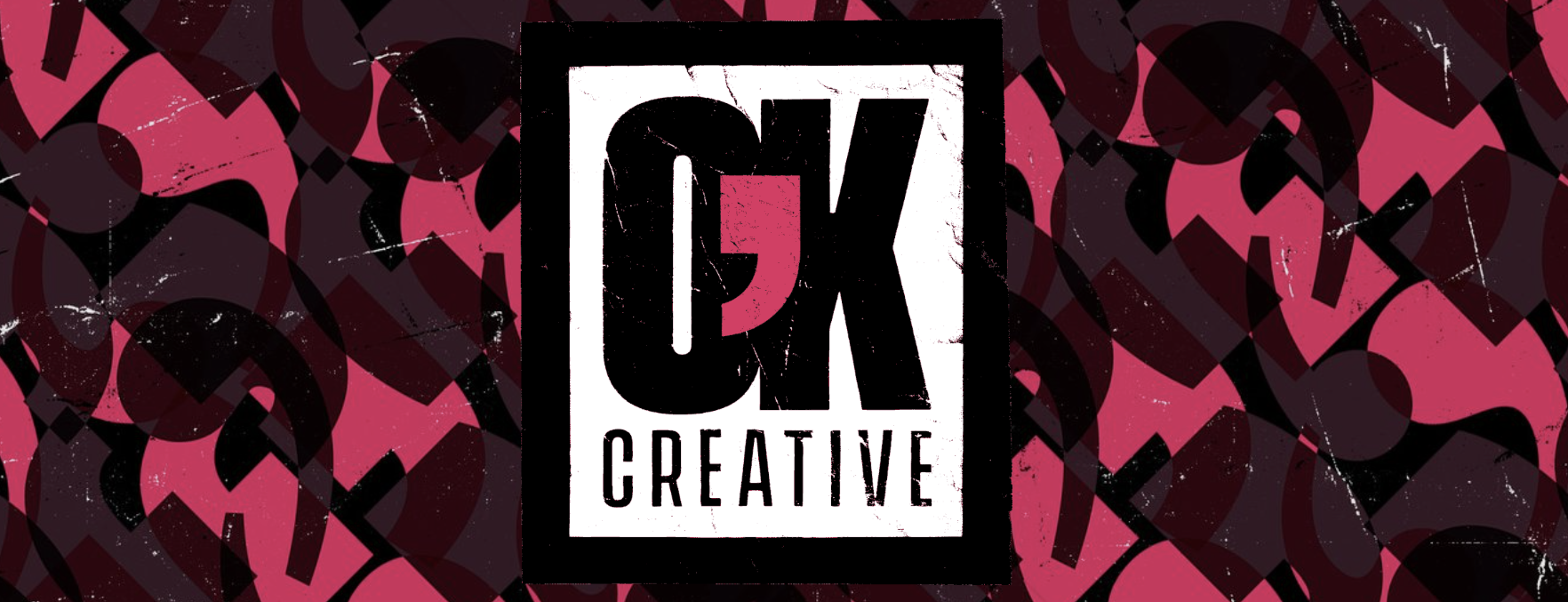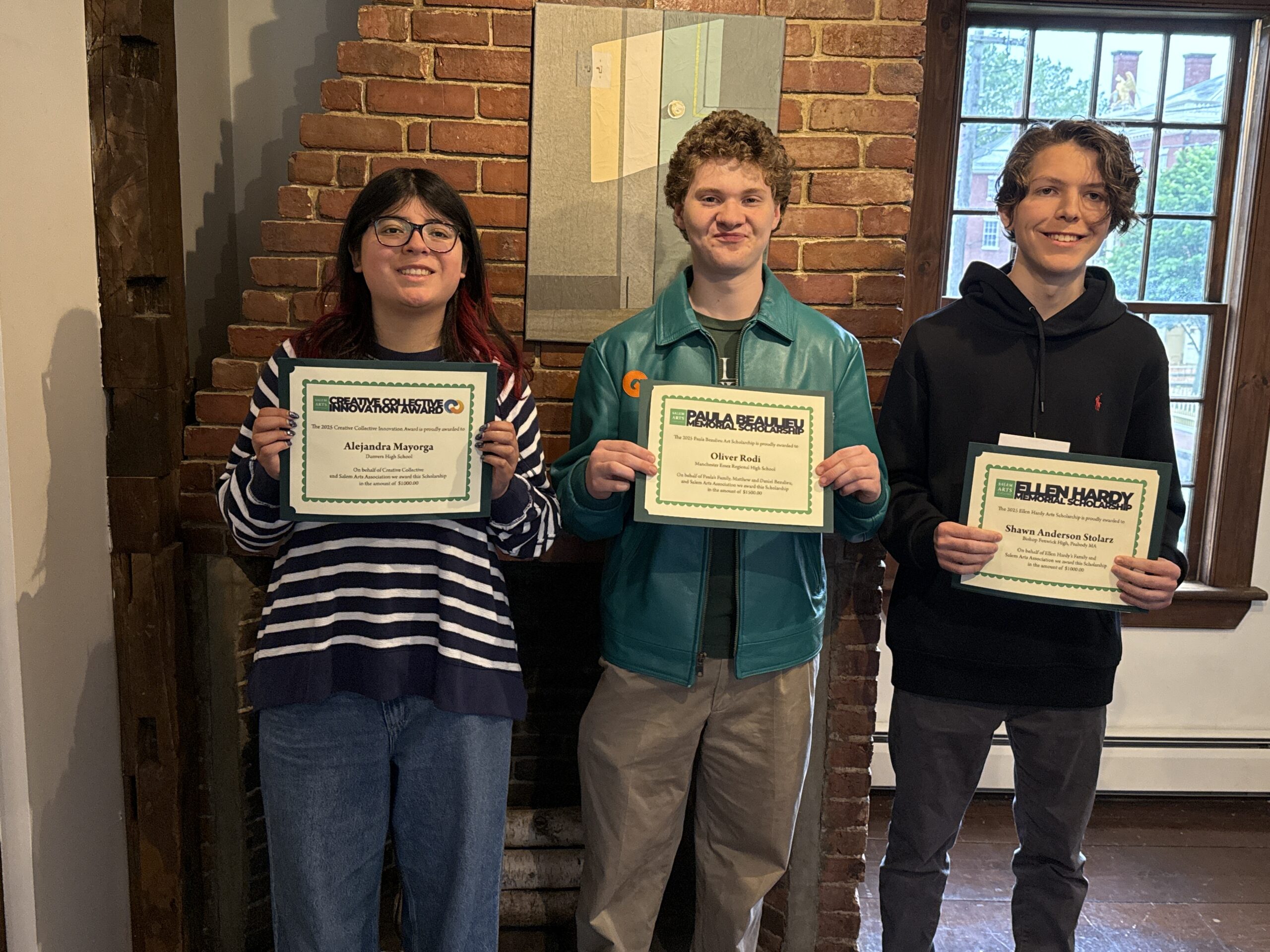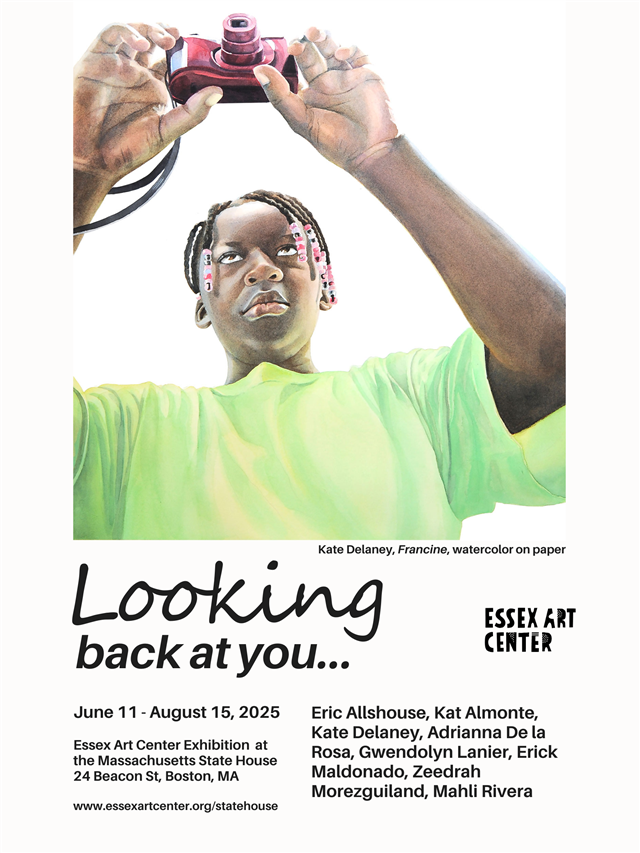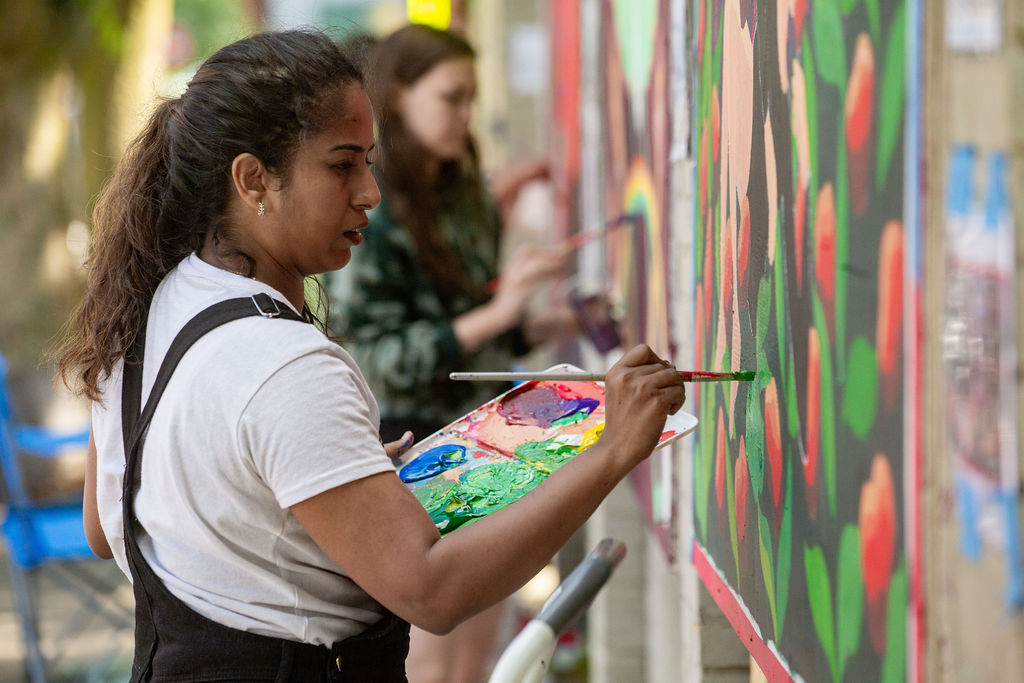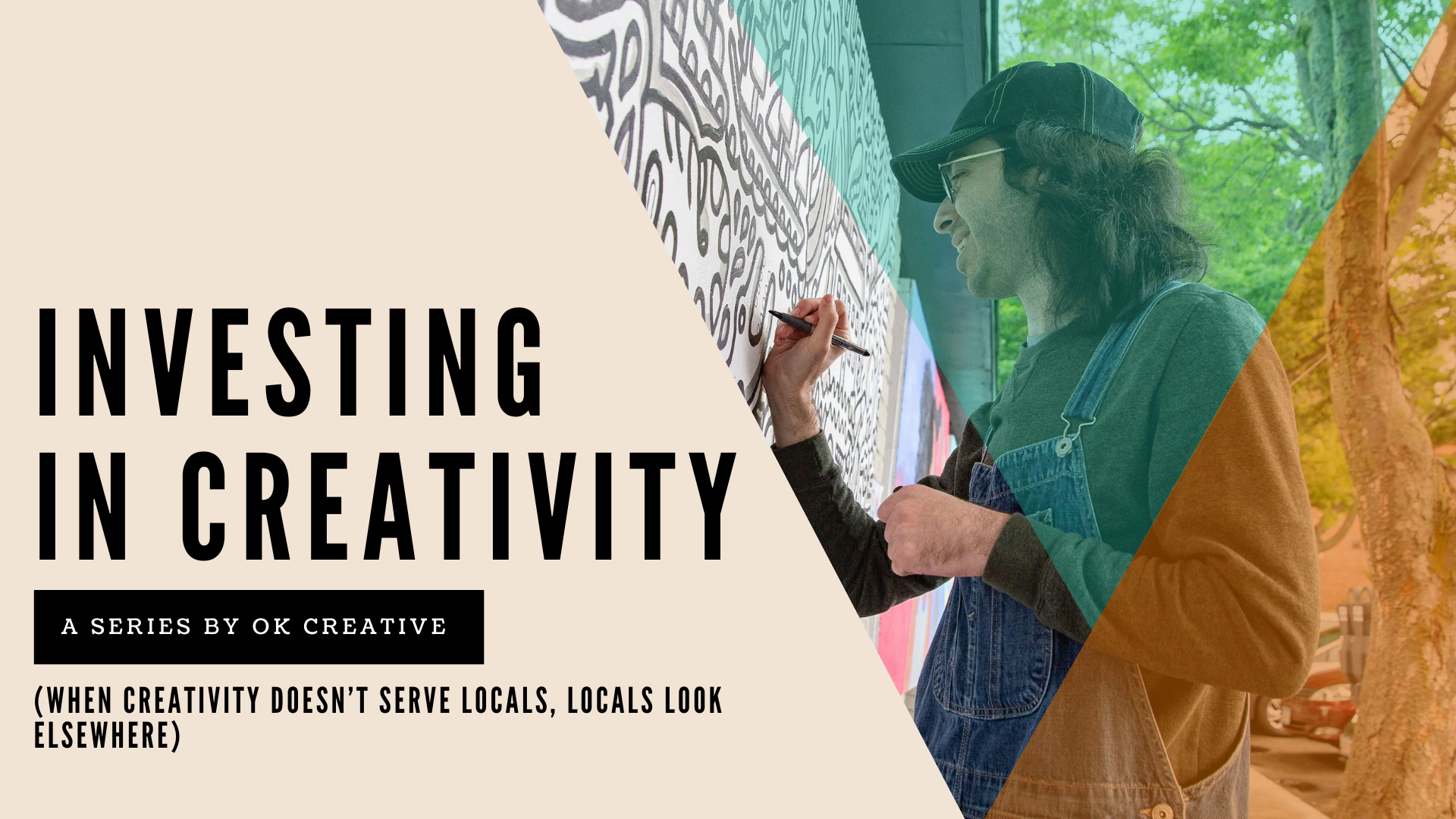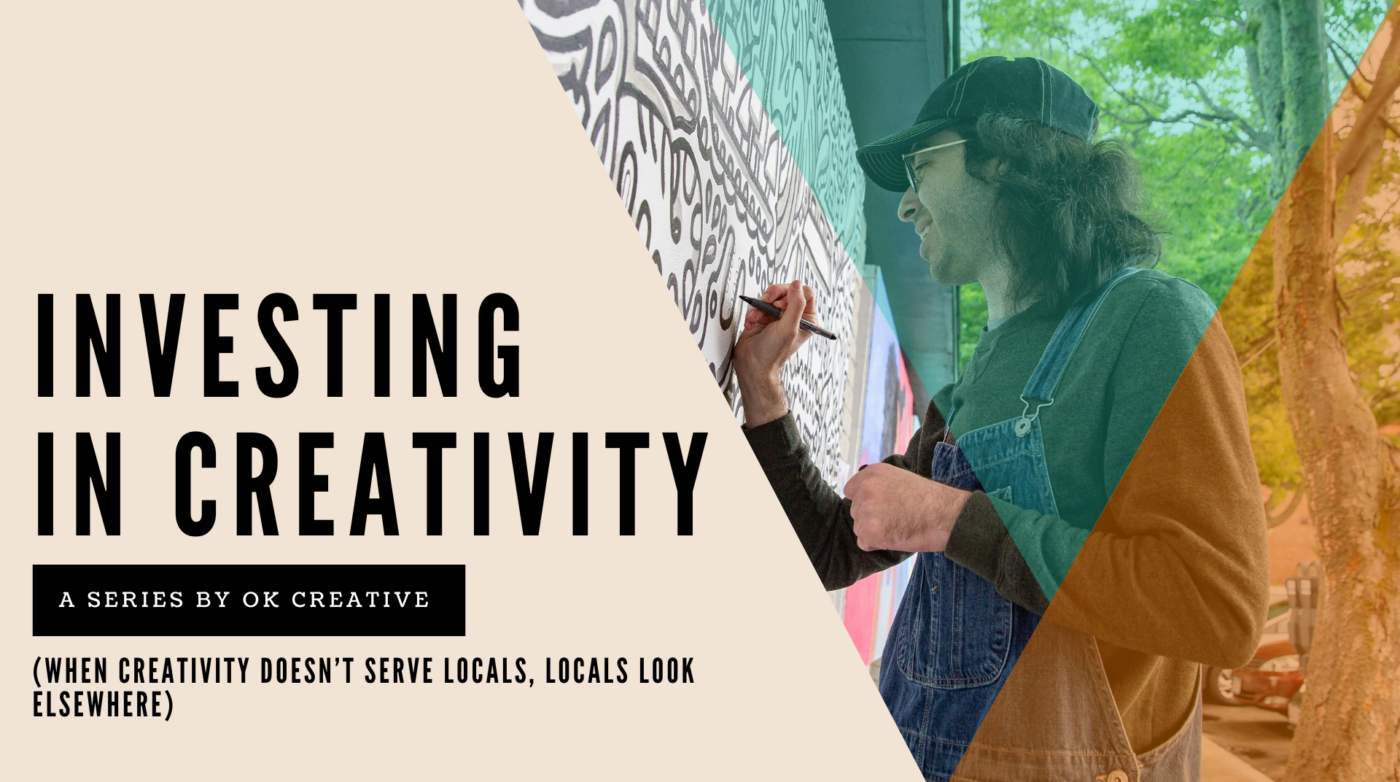
Investing in Creativity: The Economic Benefits of Supporting the Arts.
By Chris O’Keeffe and Creative Collective
Chris O’Keeffe is the founder of OK Creative: The Language Agency.
Have you checked out the recent Arts & Economic Prosperity 6 report? It’s a direct and clear articulation of the power and value of arts-based happenings and a vibrant creator community in our communities.
Not just the power to emotionally move us.
Or the therapeutic power art holds for its creators.
The report posits and proves, as have the five A&EP reports that preceded it that the arts command an indelible and measurable economic power. Although creative initiatives often (and unfairly) live and die by the whims of municipal and state budgets, the arts do not need to be subsidized by other profit centers—they contain a potent and positive ROI. 
Not Just Tourism
When discussing the measurable economic impact of the arts, the conversation regularly focuses on tourists. Visitors are, of course, a big piece of the pie. Communities that invest in the arts do benefit from tourism traffic and dollars. However, the majority of attendees for arts events do not come from other countries, states, or counties.
As it turns out, the majority of arts event attendees are locals.
According to the report, locals constitute 70% of art event attendees. As much as we love our visitors, our neighbors make up most of our shows, festivals, and installations. And here’s the thing: Over half of those attendees say that if there isn’t an event within their own community, they’ll seek one out elsewhere, taking their foot traffic and dollars with them. Investing in Creativity is paramount to community growth and well-being.
Arts programming isn’t just a “nice to have” — it’s economic table stakes to any city worth visiting.
A Regional Advantage for Artists and Locals
Our regional elected leadership has grasped the power of arts support for and by locals. According to Salem, MA Mayor Dominick Pangallo, “We’ve especially seen this through our long-standing partnerships with organizations and events such as the Salem Arts Association, Salem Film Festival, Salem Jazz and Soul Festival, Creative Collective, Salem Main Streets, and the Salem Arts Festival, among many others.”
But he takes it further, articulating the need for artistic representation in the city’s population. “We’re committed to supporting our local artist community through our ongoing efforts on the municipal level to create more affordable housing in the city. If local artists and other creatives cannot afford to live in our community, they can no longer contribute to the vibrancy that we all enjoy. The loss of our creative economy and those contributing art to our city would devastate Salem’s vitality.”
This is just the beginning of the conversation. We encourage you to review the report and let us know what you think.
Check out the Arts Impact Explorer to dig a little deeper by segment.
